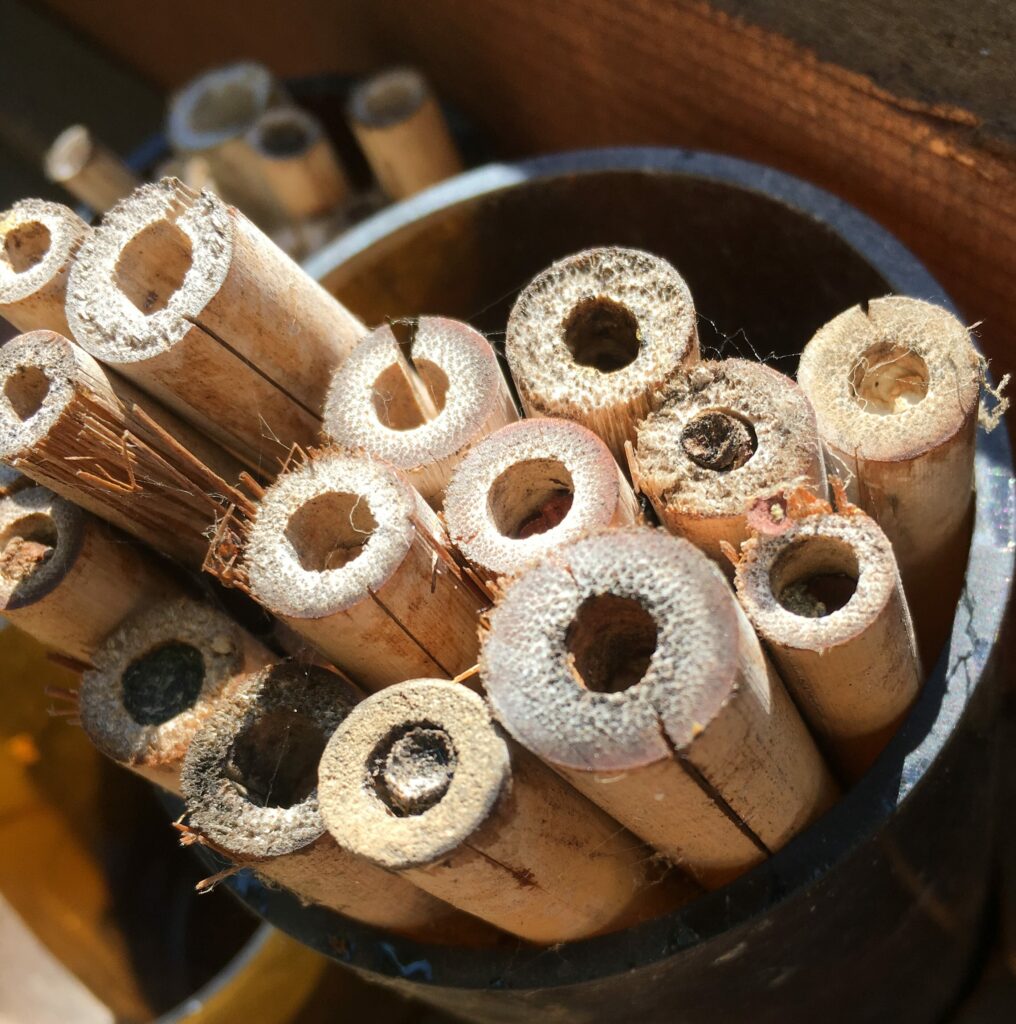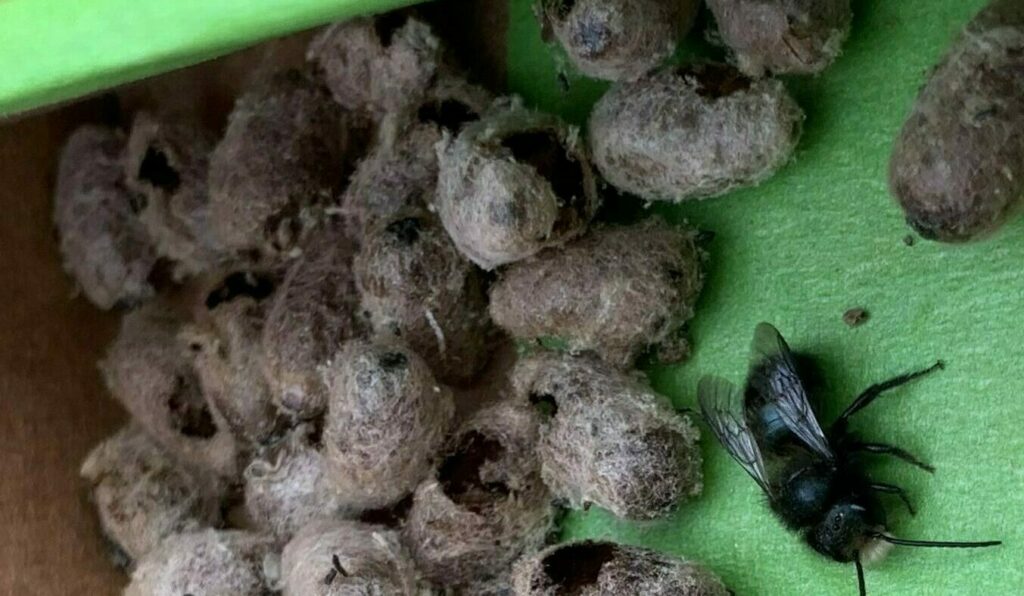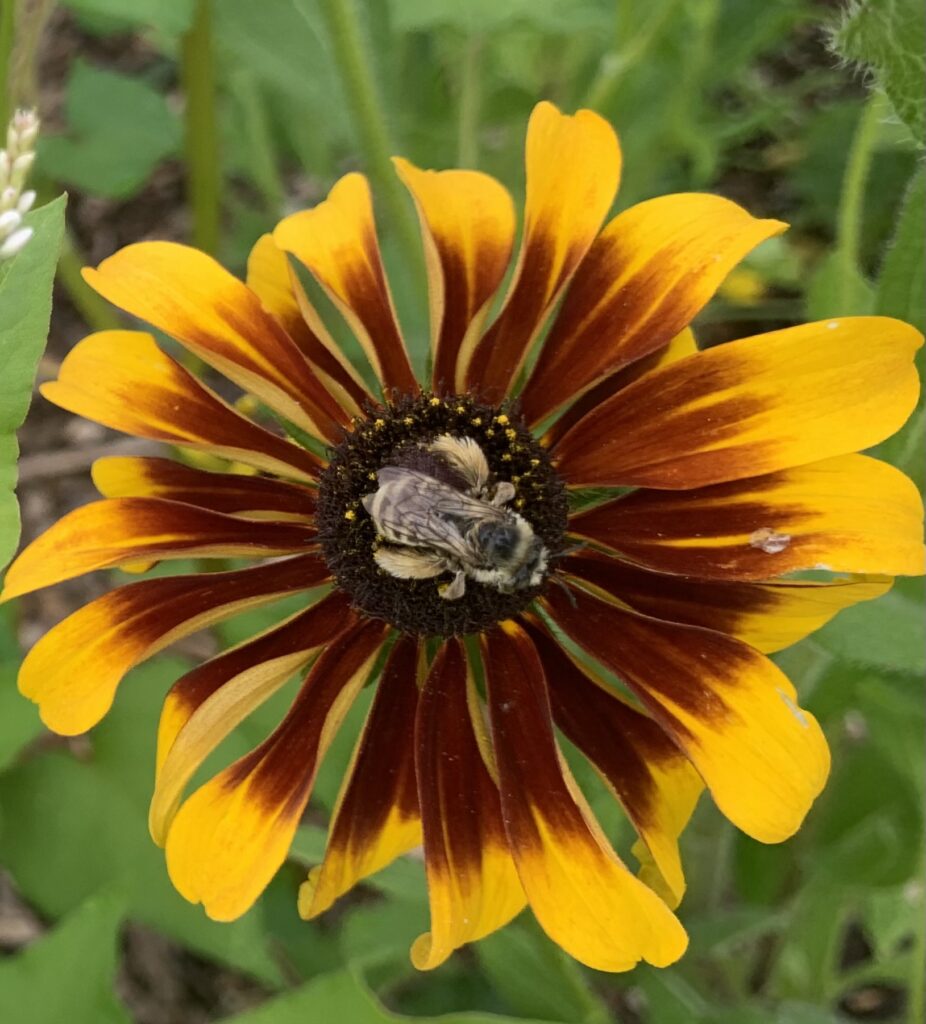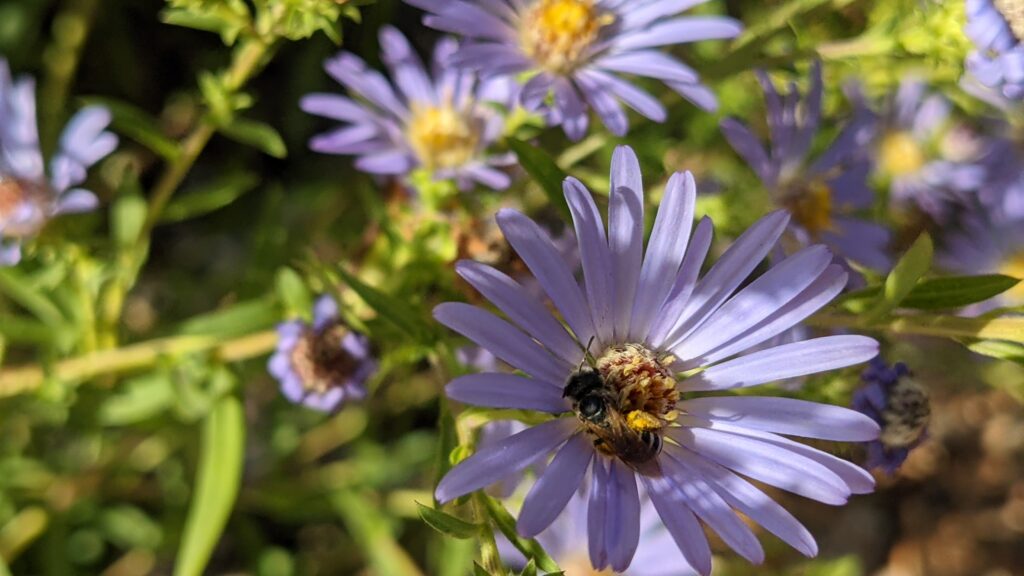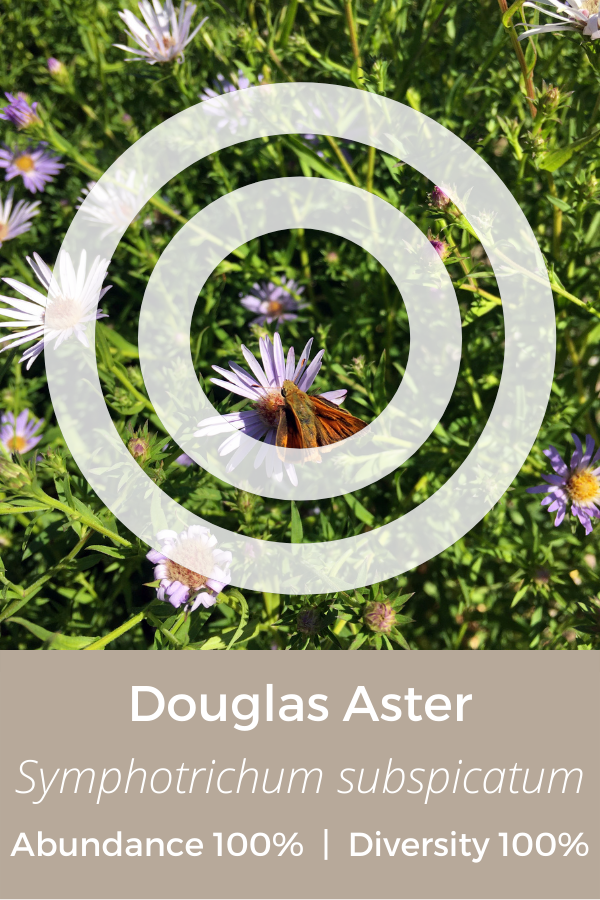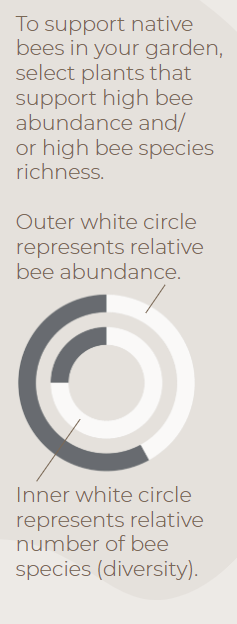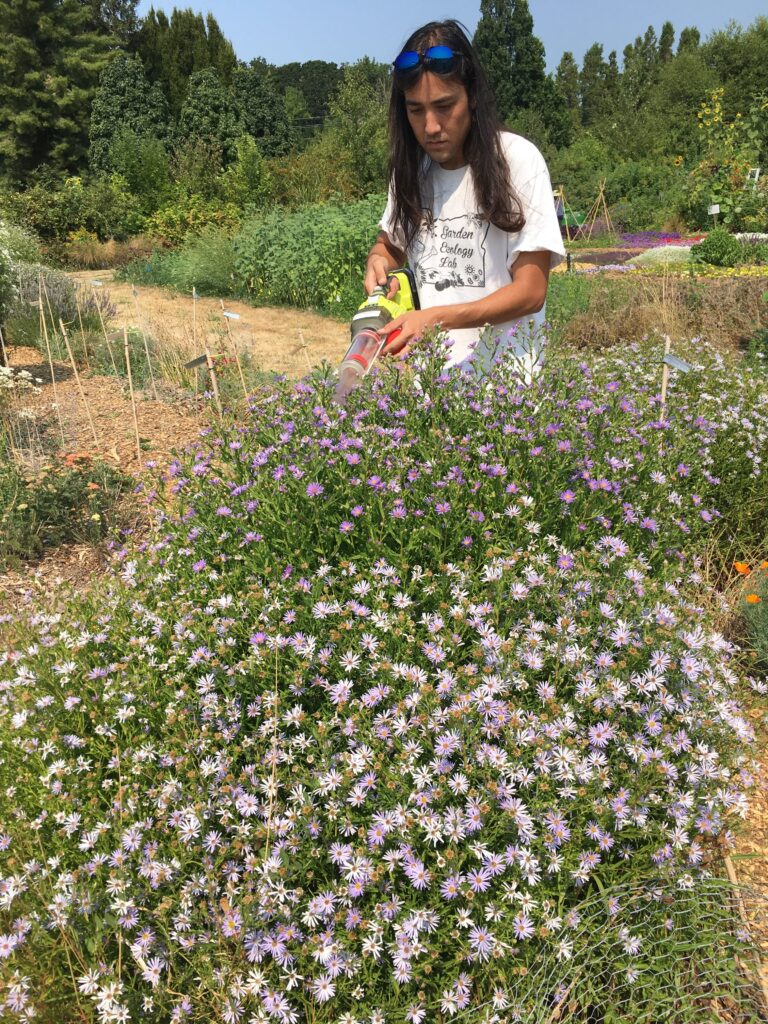A version of this article was originally written for the ‘Growing Knowledge‘ section of Digger Magazine, published by the Oregon Association of Nurseries.
The Garden Ecology Lab was founded in 2017 to advance an understanding of how to plan, plant, and manage garden systems to promote environmental and human health. It is one of two labs in the United States, and the only one in the Western US, to specifically focus on studies of garden ecology.
In this article, I provide an update on our native plant studies, with a focus on results that may be of particular interest to nursery owners. Brief summaries of many of our lab’s studies can be found on the ‘For Gardeners’ page of our lab website. Some nurseries have printed out copies of these lab briefs, so that their customers can see the ecological benefits of various plants. More briefs are planned for this year. Periodically visit our website for updates.
Native Plants in Garden Retail Centers
Interest in native plant gardening has drastically grown in recent years, but many native plants remain difficult to find for purchase. In the April 2019 issue of The Digger, Dr. Aaron Anderson highlighted three barriers that gardeners face, when trying to purchase native plants: 1) lack of advertising by native plant nurseries or gardeners’ lack of familiarity with these nurseries, 2) variation in nursery stock among native plant growers, and 3) geographic distance that gardeners might have to travel to find the plants they are looking for. These specific barriers were ones that Aaron faced when he was setting up his field study of insect communities associated with 23 species of Pacific Northwest Native plants.
Aaron used the Oregon Flora’s gardening resource page to locate where he could buy his study plants. He ultimately ended up purchasing plants from two retail nurseries (one in Corvallis and the other in Forest Grove) and two pop up native plant sales (one in Corvallis and one in Portland). He also worked with two wholesale nurseries that were generous enough to sell or donate study plants or seed in the small quantities he was seeking (one in Salem and one in Silverton). Because he has been asked this question, often, Aaron also wrote a blog post on ‘Where to Buy Native Plants in Oregon‘.
After a three-year field study, Aaron was able to identify 10 native plants which support a diversity of bee species. We developed an infographic to share this information with gardeners, and include lavender in the image, since many gardeners perceive lavender to be a pollinator-friendly plant (Bennett 2019).

Image 1: The number of estimated bee species associated with PNW native plants is shown in a yellow circle, above each bar. Lavender is shown as a comparison, since it is recognized as a pollinator-friendly plant by many gardeners.
Today, Oregon Flora’s garden resource page lists 10 nurseries where gardeners can find and purchase native plants (Oregon Flora 2025). I used their plant-finding tool, to see whether I could find the 10 native plants that we recommend to gardeners. None of the nurseries were listed as carrying all of these recommended plants: two nurseries were listed as carrying 6 species, three nurseries carried 5, two nurseries carried 4, and three nurseries carried 2. All of the 10 nurseries were listed as carrying Oregon sunshine (Eriophyllum lanatum). None were listed as carrying Farewell-to-spring (Clarkia amoena), varileaf phacelia (Phacelia heterophylla), or common madia (Madia elegans).
Farewell-to-Spring, a promising native nursery plant
The absence of farewell-to-spring from nursery shelves is particularly disappointing, because it has become a favorite in our lab group. Its native range spans the Bay Area of California, north through Oregon and Washington and into British Columbia. In Oregon, it grows west of the Cascades to the coast and is found in a variety of habitats including coastal prairie, grasslands and forested areas. It is an easy-to-grow annual plant with erect stems (5.4” maximum height), thin, green leaves and bright pink flowers. In our study plots, first bloom occurred anywhere between early June and early July and lasting through early August through late October, depending upon seasonal weather patterns and supplemental irrigation.
Farewell-to-spring attracts a diversity of beneficial insects. Aaron collected 14 bee species, 15 predatory insect taxa, and 12 parasitoid taxa from this wildflower (Anderson 2022, Anderson et al. 2022) documenting its ecological value for attracting pollinators, as well as natural enemies that promote the biological control of insect pests. In a separate, but related field study, Jen Hayes looked at the pollinator assemblages on eight species of wild-type native plants and 1-3 of their cultivars. Jen provided an overview of this study in the October 2020 issue of The Digger (Hayes and Langellotto 2020), and the full report of this study was recently published (Hayes et al. 2025) for folks wanting more detailed information.
Farewell-to-spring was one of the native plants in her field study of pollinators on native plants and native cultivars. The cultivars she used were ‘Aurora’ (dark pink blossoms with a cream center), ‘Dwarf White’ (white blossoms), and ‘Scarlet’ (red blossoms with a light pink center). She documented 32 total pollinator species from the wild-type plant (with an estimated 104 total pollinator species), 17 pollinators on ‘Aurora’ (28 species estimated), 23 pollinators on ‘Dwarf White’ (24 species estimated), and 9 pollinators on ‘Scarlet’ (13 species estimated). Furthermore, she found that specialist bees, which are picky about where they collect pollen, were either exclusively found on wild-type native plants (two species, Megachile gravita and Melissodes microstictus), or were found in higher abundance on wild-type plants compared to cultivars (two species, Melissodes lupinus and Melissodes clarkiae). Because specialist bees have relatively narrow diet preferences, including their preferred forage plants is an easy way to attract these unique bees into a garden, and to locally increase pollinator biodiversity.
In addition to the importance of wild-type Farewell-to-spring as a forage plant, Jen worked with Mallory Mead (a former undergraduate student in our lab) to document its importance for bee nest material. Many leafcutter bee species use leaves, mud, resin, sticks, pebbles, or petals when they build their nests. Jen documented two species of petal-cutting bees in her study plot, each of which had a significant association with Farewell-to-spring and its cultivars. Megachile montivaga had significant associations with the wild type native and ‘Dwarf White’. Megachile brevis was significantly associated with the wild type native, ‘Dwarf White’, and ‘Aurora’.

Image 2. A and B: Leafcutter bees cut discs from petals of a cultivar. C: A leafcutter bee carries a petal disc to its nest. D: A leafcutter bee nest in a sunflower stalk. Credits: Svea Bruslind (A), Devon Johnson (B), Mallory Mead (C), Heidi Nordijk (D), © Oregon State University
Although Jen found evidence that the leafcutting bees were significantly associated with two of the three cultivars she included in her study, Mallory documented a very strong preference for the wild-type native over the cultivars, when she documented foraging for nesting material. Because leafcutting bees leave a characteristic crescent cut in petals, Mallory could document foraging for nesting material by counting the number of petal cuts from each plant. Wild type native plants had 3-4X as many petal cuts than cultivars. Even when we controlled for bloom count per plant, the wild type native was significantly preferred over the cultivars.

Image 3: Number of petal cuts by bees on wild-type Farewell-to-spring, and 3 cultivars.
Native Cultivars Are Often Easier to Find and Buy
Given the high abundance and diversity of beneficial insects associated with Farewell-to-spring, as well as its unique association with specialist foragers and petal-cutting bees, we enthusiastically recommend this plant to ecologically-minded gardeners. However, the average gardener shopping for this species is more likely to encounter cultivars than wild-type plants. This is partly because the plethora of Farewell-to-spring cultivars are on the market. In addition to the three included in Jen’s study, gardeners can find ‘Double Azalea’ (pink, purple, red, white flowers), ‘Lilac’ (pink petals with dark red center spots), ‘Pink to Red’ (red petals with light pink edges), ‘White’ (white flowers), ‘Pink’ (light pink flowers with no other markings); and ‘Sugarplum’ (semi-double flowers, light pink with rose-colored center markings, dwarf, somewhat bushy).
As noted earlier, native plants can be difficult to source in the retail marketplace. Offerings may not reflect the regional species pool of plants (Zinnen and Matthews 2022), and in some areas, 77% of the native plants on market shelves are actually hybrids or cultivars (Coombs et al. 2020). However, multiple studies have found that gardeners are willing to pay higher prices for native plants and locally sourced plant materials.
Somewhat unexpectedly, in a recent survey of 719 gardeners (Hayes et al. in preparation), 81% report that they buy their native plants at pop-up plant sales hosted by Soil and Water Conservation Districts, Master Gardener groups, or other non-profits. A comparable percentage of gardeners (78%) said that they buy their native plants at retail plant nurseries. However, given the transient nature of pop-up plant sales, it was surprising to us that they were as or more popular than brick-and-mortar stores for native plant purchases. I think this speaks to the difficulty many gardeners have finding the plants they are seeking, and how non-profit plant sales are filling a market void. It also points to a market opportunity for the nursery industry, in general.
References:
Anderson, A. 2019. Native plant production and marketing. The Digger, April Issue, pp 33-36.
Anderson, A. (2022). Evaluating the Attractiveness of Pacific Northwest Native Plants to Insects and Gardeners [Dissertation submitted in partial fulfillment of Ph.D.] Oregon State University.
Anderson, A. G., Costner, L., Best, L., & Langellotto, G. A. (2022). The bee fauna associated with Pacific Northwest (USA) native plants for gardens. Conservation Science and Practice, 4(10), e12801.
Bennett L. 2019. Examining the gap between interest and understanding of provisioning for bees: A capstone project to support urban bee conservation [Thesis submitted in partial fulfillment of M.N.R.]. Oregon State University.
Coombs, G., Gilchrist, D., & Watson, P. (2020). An assessment of the native and invasive horticultural plants sold in the mid-Atlantic region. Native Plants Journal, 21(1), 74-82.
Hayes, J., Langellotto, G. 2020. Pollinator plant trials: researchers test the value of Willamette Valley natives and nativars. The Digger, October Issue, pp 33-37.
Hayes JJ-M, Bell NCS, Best LR, et al. 2025. Pacific Northwest native plants and native cultivars Part I: Pollinator visitation. Environ. Entomol. https://doi.org/10.1093/ee/nvae126.
Oregon Flora. 2025. Gardening with natives. https://oregonflora.org/garden/index.php, accessed January 29, 2025.
Zinnen, J., Matthews, J. W. 2022. Native species richness of commercial plant vendors in the Midwestern United States. Native Plants Journal, 23 (1) 4-15.













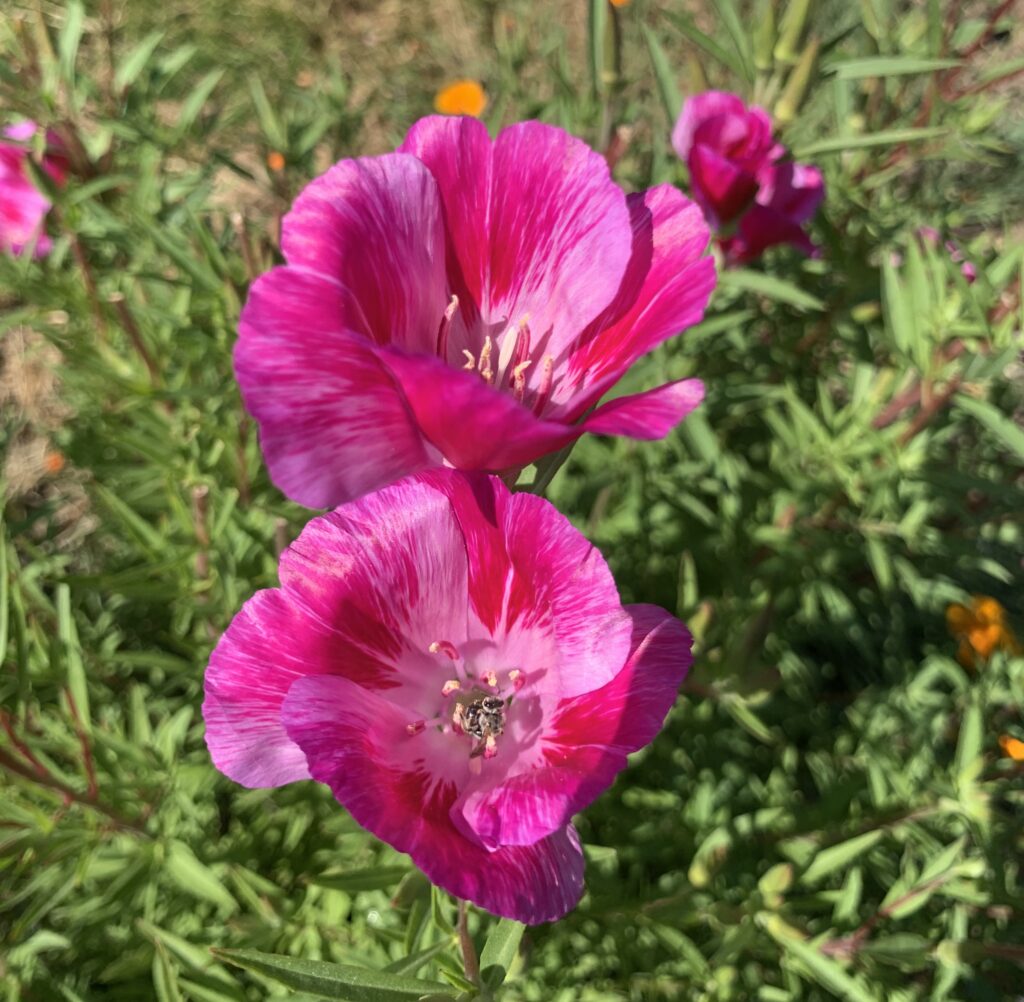









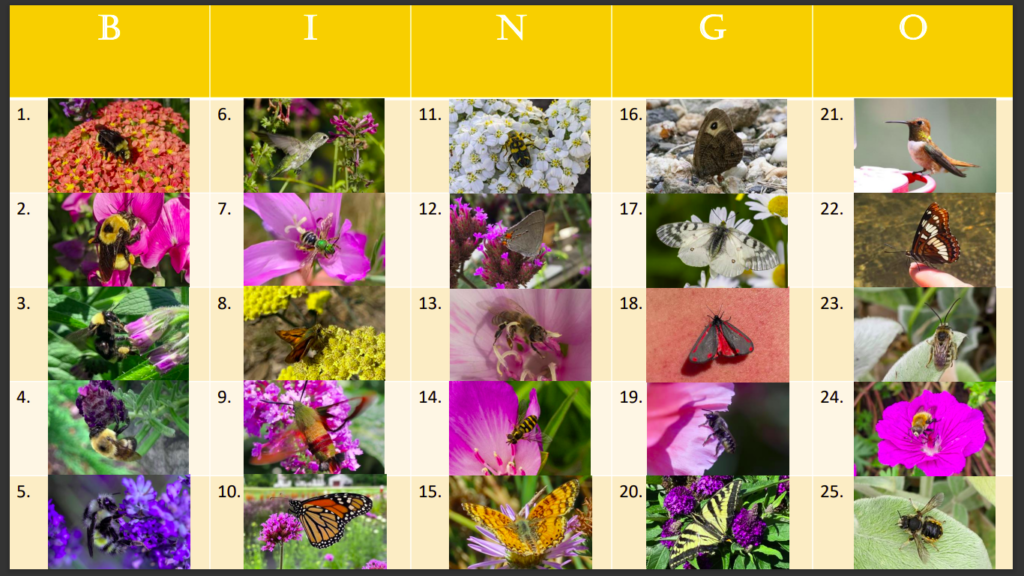


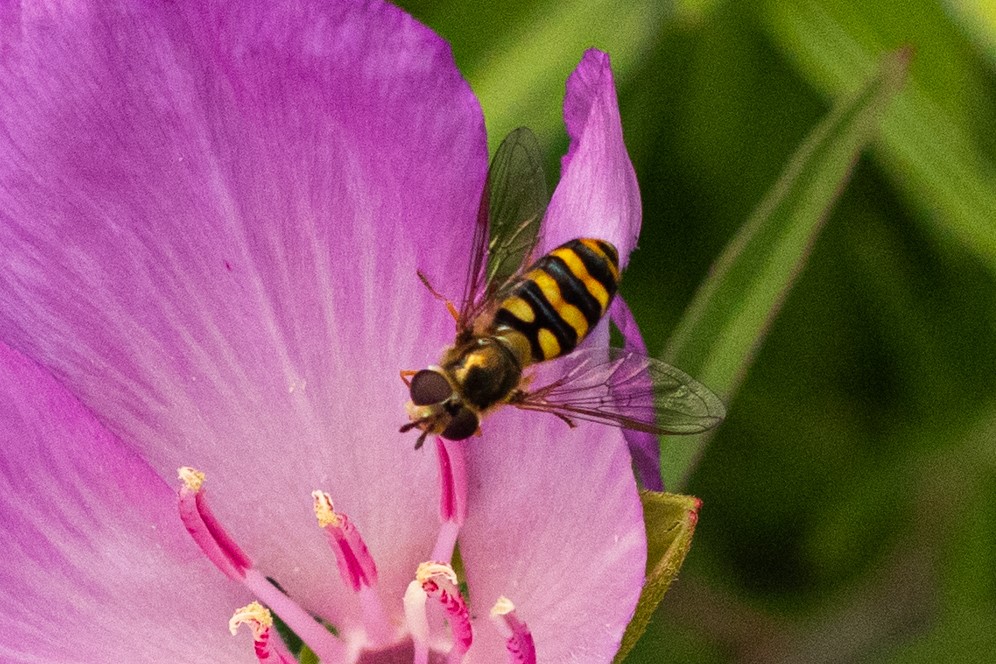


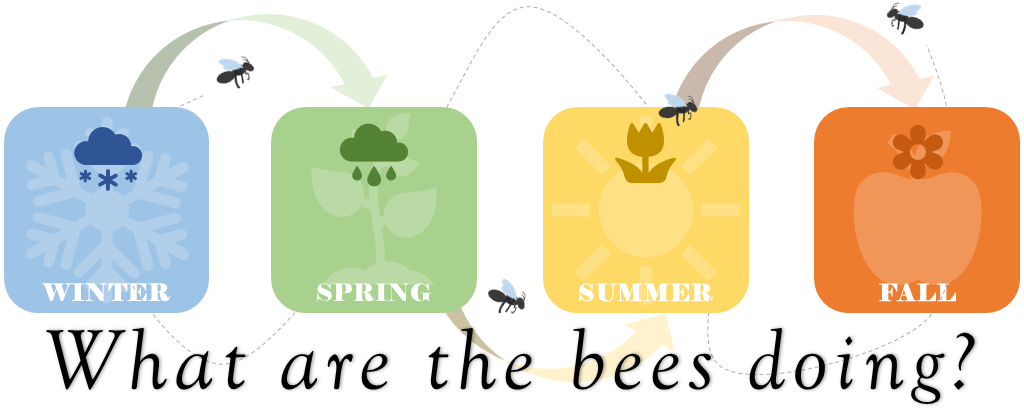




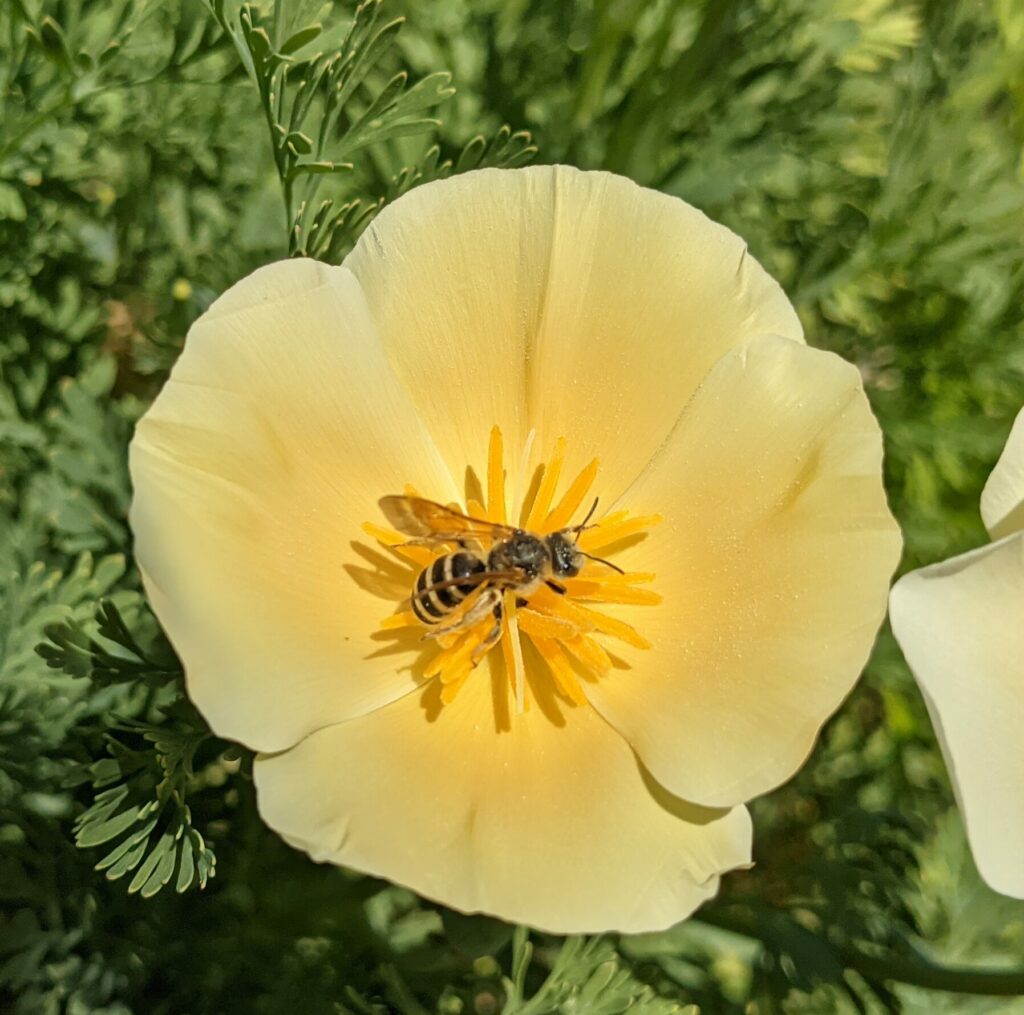
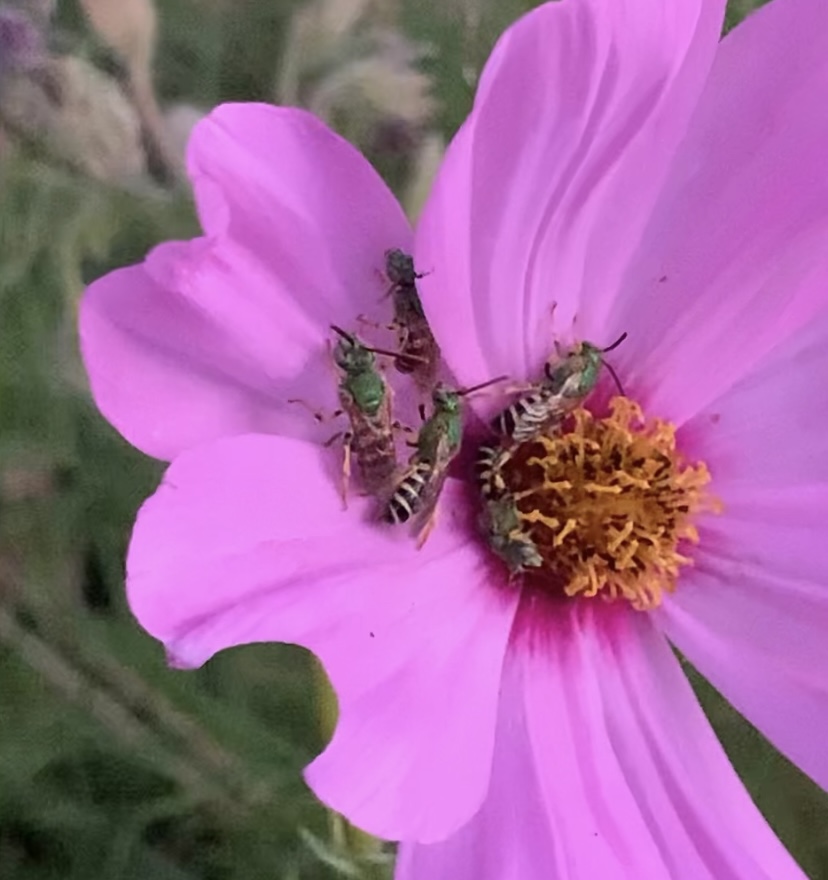
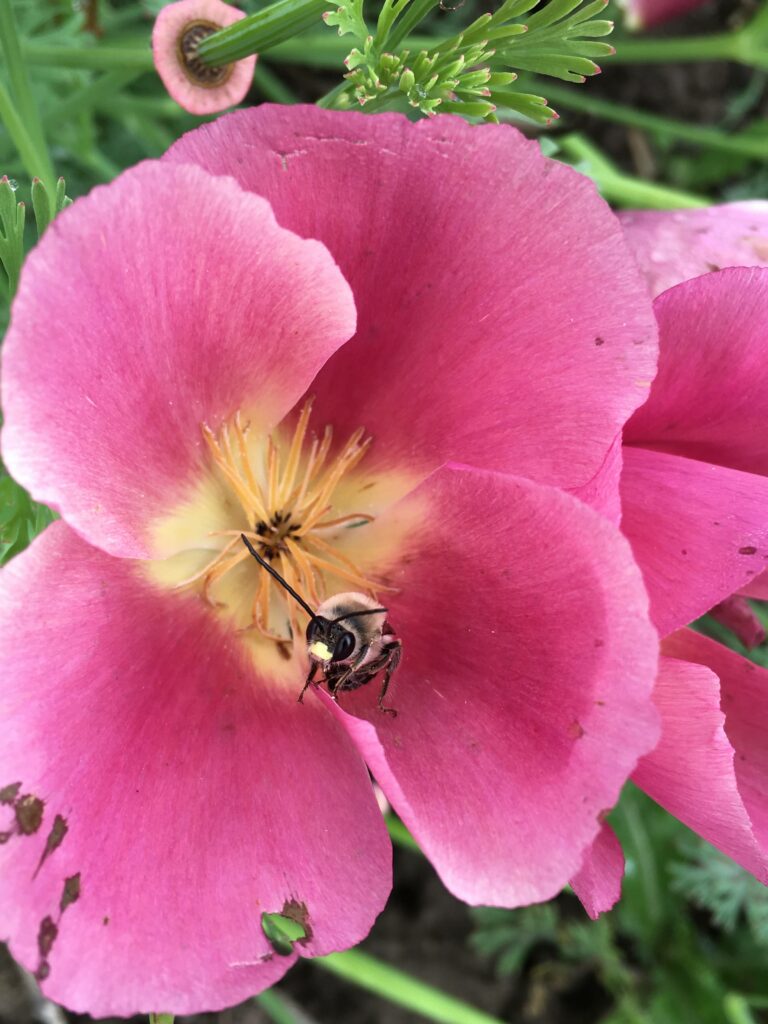


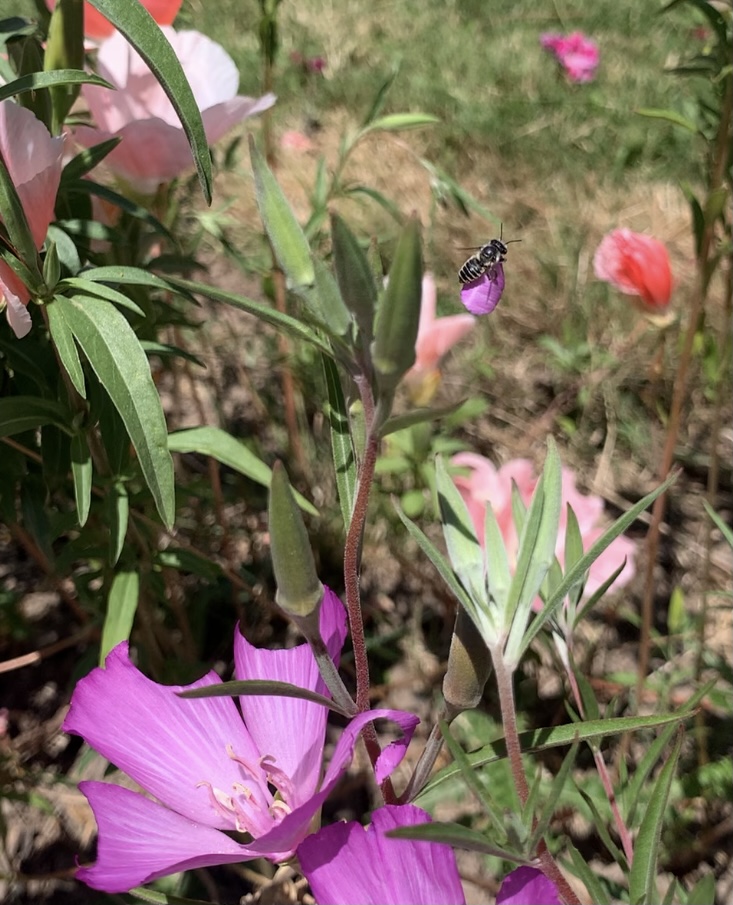






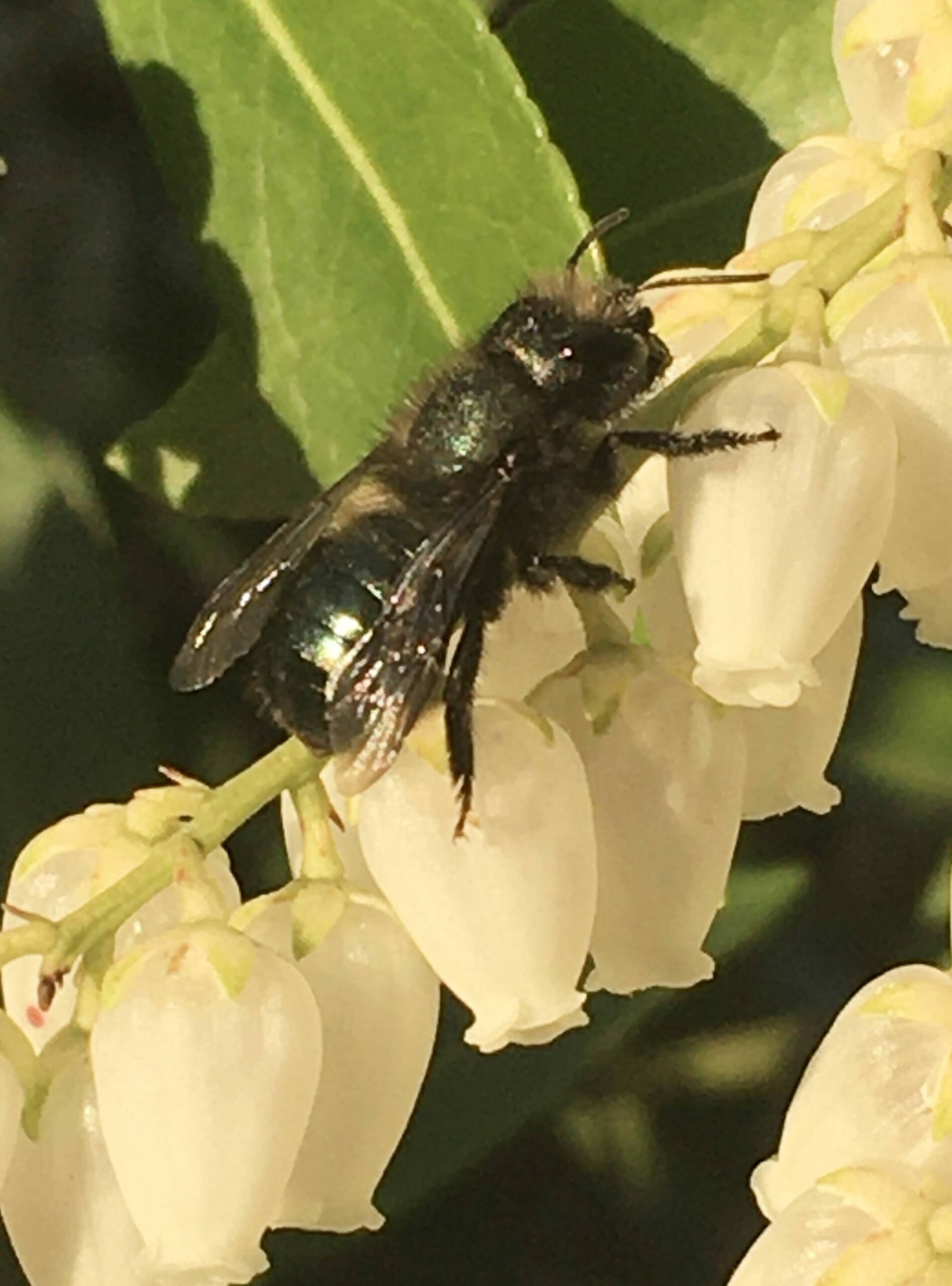



 .
.
